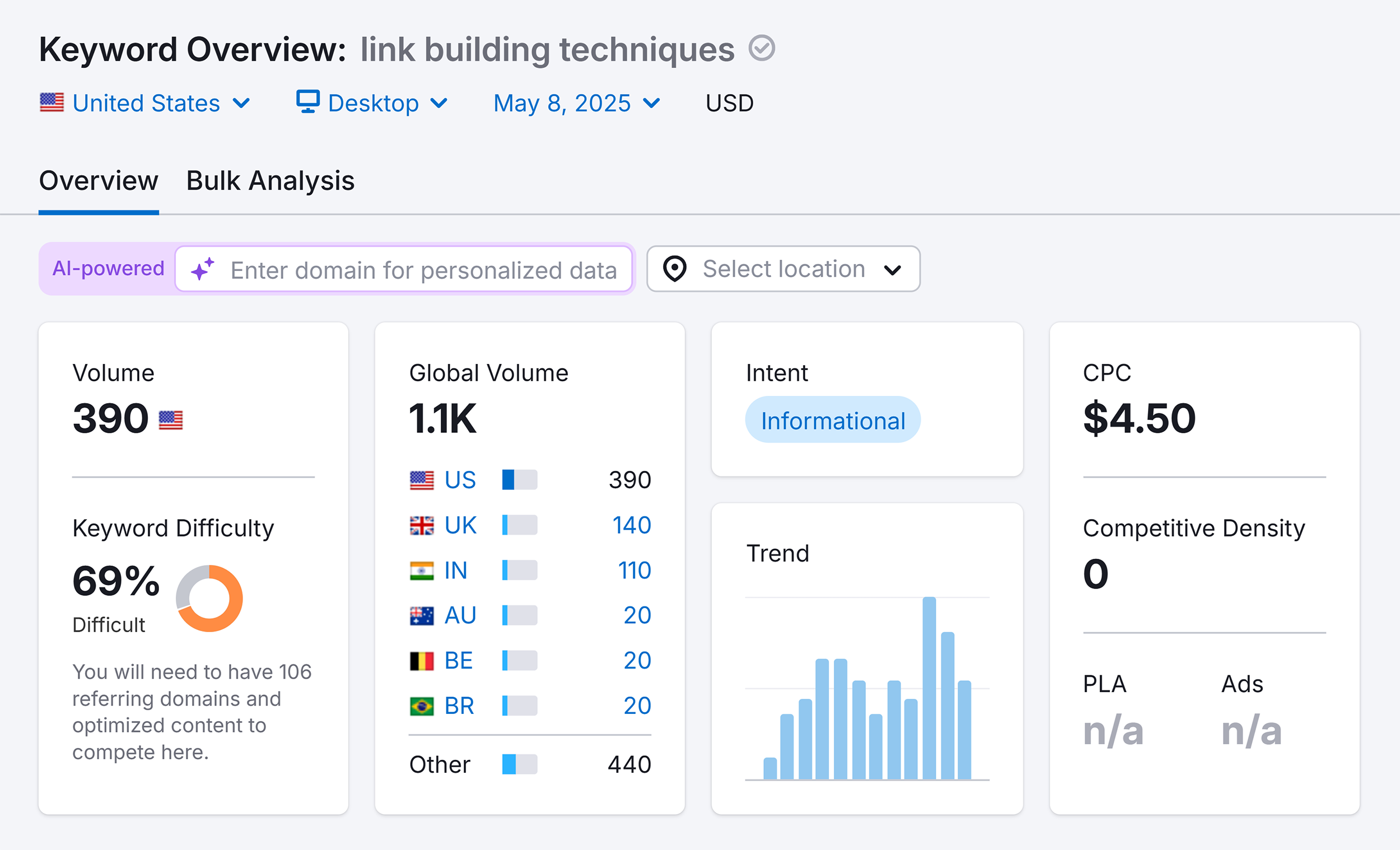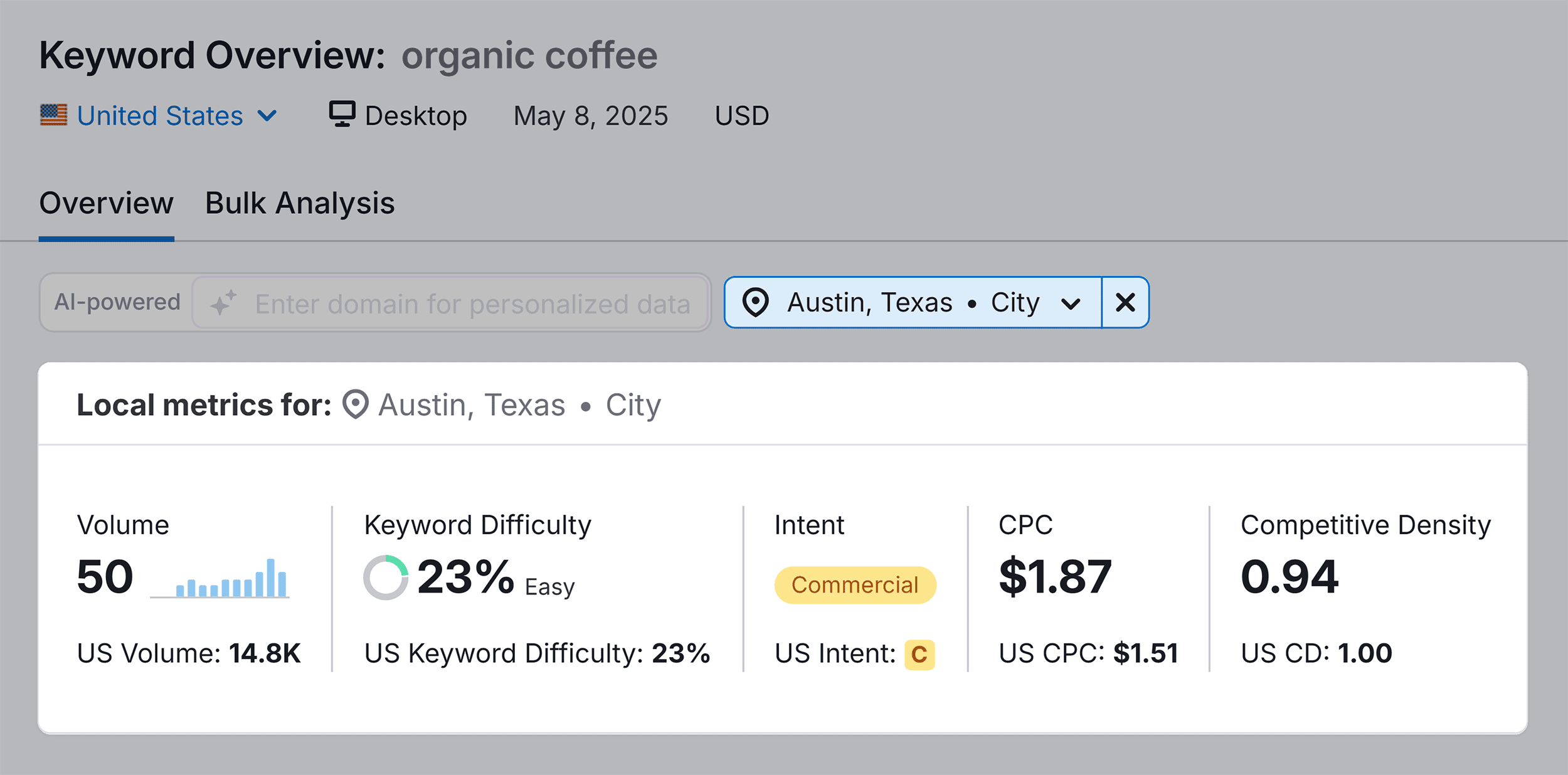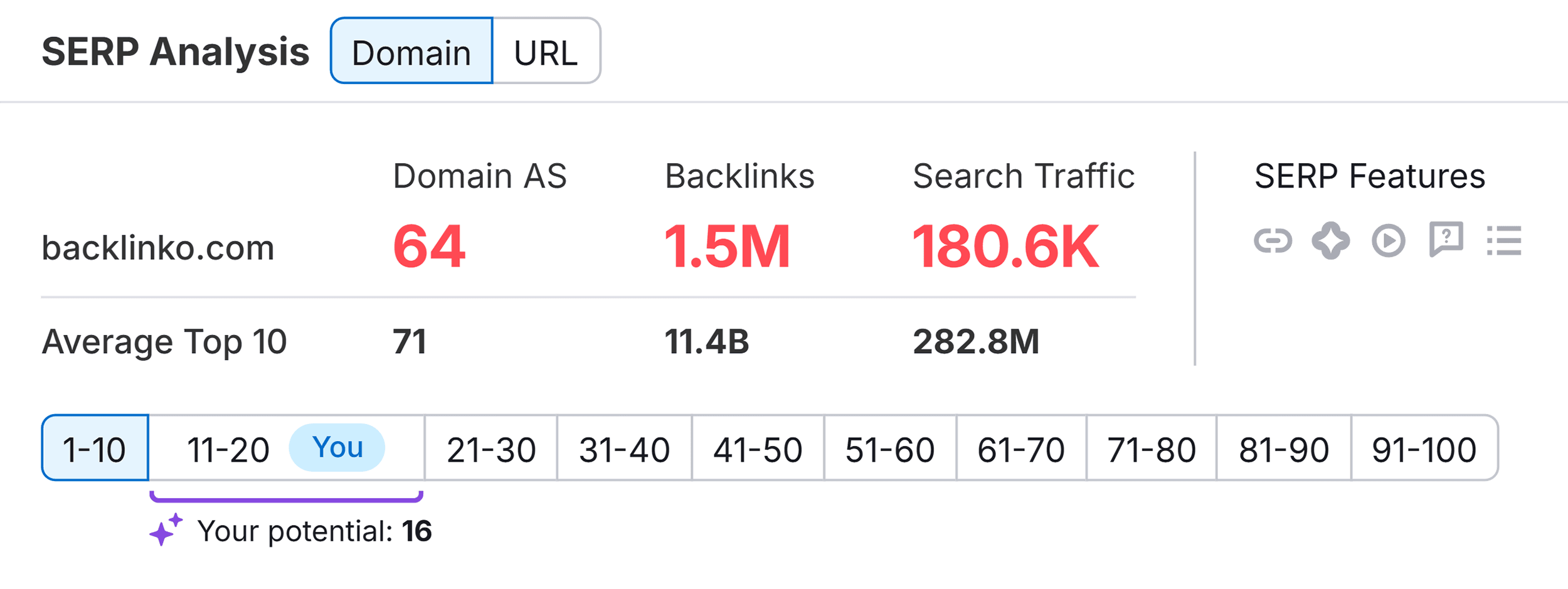Check the Keyword Difficulty for Any Search Term
Analyze keywords with precision using our keyword difficulty checker.
It provides more than just a difficulty score — helping you make smarter, data-driven SEO decisions.

Understand Your Ranking Potential
The keyword difficulty tool shows you how hard it will be to rank for a specific search term. Along with metrics like search volume — at the country level and globally.

Combine that with search trends over the past 12 months, cost-per-click (CPC) data, and competitive density.
This gives you a full picture of the keyword’s competitiveness.
You can even compare this to historical data to understand how the keyword difficulty has changed over time.

And by choosing a specific location, you’ll get insights tailored for your local SEO campaigns.

Get Personalized Keyword Difficulty Scores
Don’t just rely on generic difficulty scores.
Instead, use AI-powered data to understand where your site can realistically rank.

Personal Keyword Difficulty (PKD) takes into account:
- Your domain’s relevance to the target keyword
- Search term competitiveness
- Key metrics for your domain and competitors
The result?
A tailored score that shows your potential position and current rank.
Use this data to find simple keywords for new content. You can also identify keywords to improve your existing content.
Unlock New Keyword Ideas
The keyword difficulty checker provides many relevant keyword ideas.
It also shows the search volumes and personalized difficulty scores.
You’ll even get ideas for relevant pillar and cluster pages:

It can help you build a smarter content plan based on real data — not guesswork.
And keep your efforts focused on content that drives high-quality traffic, faster.
Get More Than Just a Keyword Difficulty Score
To get a full idea of how difficult a keyword will be to rank for, you need to analyze the search engine results page (SERP) for that term.

The keyword difficulty checker shows you the top 10 sites ranking in Google for your target keyword.
It provides metrics like page Authority Score, referring domains, and backlinks.
This helps you see exactly what you’re up against.
For example, if many of the ranking pages have lots of backlinks and referring domains, there’s a good chance you’ll also need them to rank for that term.
The Domain view makes comparing these metrics even easier:

It shows you key metrics about your domain and ranking potential.
This lets you easily measure your site against others in the search results to understand your chances of ranking.
Compare It to Other Keyword Difficulty Tools
Not all free keyword tools go beyond surface-level scores.
If you’re trying to analyze keyword difficulty for a term and actually act on it, features like traffic potential and personalized scoring make a difference.
Here’s how different KD checkers stack up — so you can choose one that delivers real insights.
| Tool | Keyword Difficulty | Personal Keyword Difficulty | Traffic Potential |
|---|---|---|---|
| Semrush | ✅ | ✅ | ✅ |
| Ahrefs | ✅ | ❌ | ✅ |
| Moz | ✅ | ❌ | ❌ |
| Mangools | ✅ | ✅ | ❌ |
| Serpstat | ✅ | ❌ | ❌ |
| SE Ranking | ✅ | ❌ | ❌ |
| Keysearch | ✅ | ❌ | ❌ |
Ready to Find Keywords You Can Actually Rank For?
Get all of this keyword difficulty data (and more) today with the Semrush Keyword Overview tool.
Start your free 14-day trial with our exclusive offerand get your Personal Keyword Difficulty score for any search term.
